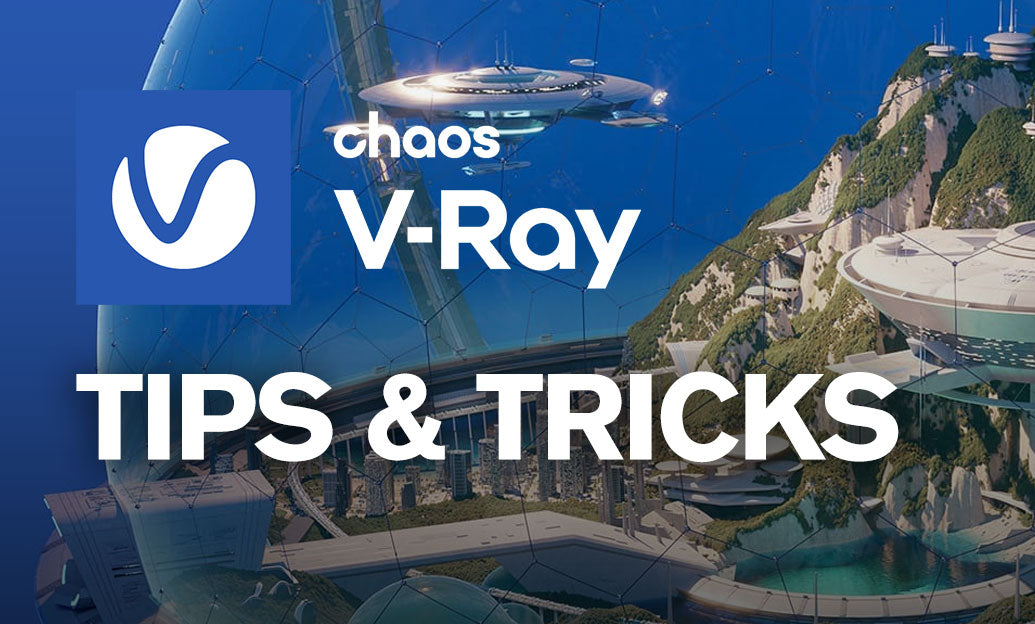Your Cart is Empty
Customer Testimonials
-
"Great customer service. The folks at Novedge were super helpful in navigating a somewhat complicated order including software upgrades and serial numbers in various stages of inactivity. They were friendly and helpful throughout the process.."
Ruben Ruckmark
"Quick & very helpful. We have been using Novedge for years and are very happy with their quick service when we need to make a purchase and excellent support resolving any issues."
Will Woodson
"Scott is the best. He reminds me about subscriptions dates, guides me in the correct direction for updates. He always responds promptly to me. He is literally the reason I continue to work with Novedge and will do so in the future."
Edward Mchugh
"Calvin Lok is “the man”. After my purchase of Sketchup 2021, he called me and provided step-by-step instructions to ease me through difficulties I was having with the setup of my new software."
Mike Borzage
V-Ray Tip: Understanding Displacement vs. Bump Mapping in V-Ray for Realistic Textures
April 30, 2025 2 min read

Understanding the distinction between displacement and bump mapping is crucial for achieving realistic textures in your V-Ray renders. Both techniques modify surface geometry to create the illusion of depth and detail, but they do so in fundamentally different ways.
Displacement Mapping
Displacement mapping alters the actual geometry of a surface based on a texture map, providing true depth and detail.
- Geometry Alteration: Modifies the mesh by displacing vertices during rendering.
- Realistic Detail: Creates genuine surface variations, enhancing realism.
- High Resource Usage: Can significantly increase render times and memory usage.
- Best Use Cases: Suitable for close-up shots where detailed surface irregularities are visible.
-
Implementation Tips:
- Use high-resolution displacement maps for finer details.
- Optimize mesh topology to handle displacement efficiently.
- Leverage V-Ray’s adaptive displacement settings to balance quality and performance.
Bump Mapping
Bump mapping simulates surface imperfections by altering the shading and lighting calculations without changing the actual geometry.
- Shading Alteration: Adjusts surface normals based on a texture map to create the illusion of depth.
- Performance Efficient: Less demanding on system resources compared to displacement mapping.
- Limited Realism: Only affects the shading and does not provide actual geometric detail.
- Best Use Cases: Ideal for distant objects or when performance is a priority over detailed realism.
-
Implementation Tips:
- Use high-contrast bump maps to enhance surface details.
- Combine bump mapping with normal maps for improved realism.
- Adjust bump strength to avoid exaggerated surface effects.
Choosing Between Displacement and Bump Mapping
The decision to use displacement or bump mapping depends on the specific requirements of your project.
- Level of Detail: Use displacement mapping for high-detail surfaces where actual geometry is necessary, and bump mapping for less detailed surfaces.
- Performance Constraints: Bump mapping is preferable when resources are limited or when rendering large scenes.
- Visual Requirements: Assess whether the slight geometric alterations of displacement mapping are essential for the desired realism.
Optimizing Your Workflow
To efficiently integrate displacement and bump mapping into your V-Ray projects, consider the following best practices:
- Combine both techniques to balance detail and performance.
- Utilize V-Ray’s optimization settings to manage resource usage effectively.
- Stay updated with the latest V-Ray features and enhancements through resources like NOVEDGE.
For more in-depth tutorials and advanced techniques, visit NOVEDGE, your go-to resource for mastering V-Ray and elevating your 3D rendering skills.
You can find all the V-Ray products on the NOVEDGE web site at this page.
Also in Design News

Integrating Design Software and ERP Systems for Operational Excellence
May 07, 2025 8 min read
Read MoreSubscribe
Sign up to get the latest on sales, new releases and more …




